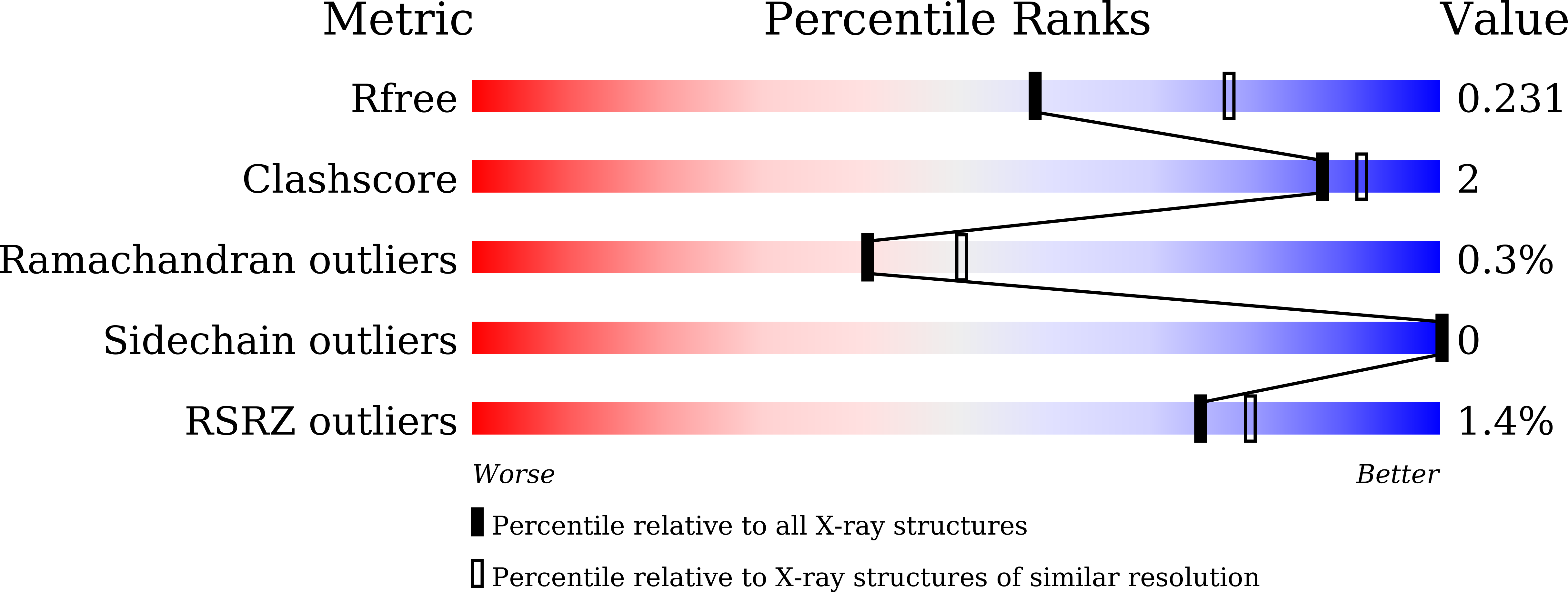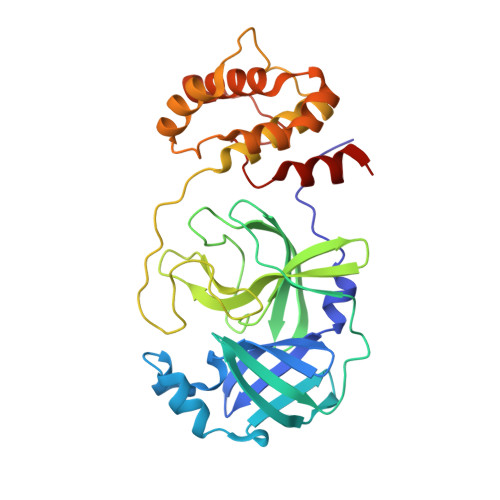Molecular mechanisms of SARS-CoV-2 resistance to nirmatrelvir.
Duan, Y., Zhou, H., Liu, X., Iketani, S., Lin, M., Zhang, X., Bian, Q., Wang, H., Sun, H., Hong, S.J., Culbertson, B., Mohri, H., Luck, M.I., Zhu, Y., Liu, X., Lu, Y., Yang, X., Yang, K., Sabo, Y., Chavez, A., Goff, S.P., Rao, Z., Ho, D.D., Yang, H.(2023) Nature 622: 376-382
- PubMed: 37696289
- DOI: https://doi.org/10.1038/s41586-023-06609-0
- Primary Citation of Related Structures:
8H3G, 8H3K, 8H3L, 8H4Y, 8H51, 8H57, 8H5F, 8H5P, 8H6I, 8H6N, 8H7K, 8H7W, 8H82, 8HBK - PubMed Abstract:
Nirmatrelvir is a specific antiviral drug that targets the main protease (M pro ) of SARS-CoV-2 and has been approved to treat COVID-19 1,2 . As an RNA virus characterized by high mutation rates, whether SARS-CoV-2 will develop resistance to nirmatrelvir is a question of concern. Our previous studies have shown that several mutational pathways confer resistance to nirmatrelvir, but some result in a loss of viral replicative fitness, which is then compensated?for by additional alterations 3 . The molecular mechanisms for this observed resistance are?unknown. Here we combined biochemical and structural methods to demonstrate that alterations at the substrate-binding pocket of M pro can allow SARS-CoV-2 to develop resistance to nirmatrelvir in two distinct ways. Comprehensive studies of the?structures of?14 M pro mutants?in complex with drugs or substrate revealed that alterations at the S1 and S4 subsites substantially decreased?the level of inhibitor binding, whereas alterations at the S2 and S4' subsites unexpectedly increased protease activity. Both mechanisms contributed to nirmatrelvir resistance, with?the latter compensating for the loss in enzymatic activity of the former, which in turn accounted for the restoration of viral replicative fitness, as observed previously 3 . Such a profile was also observed for ensitrelvir, another clinically relevant M pro inhibitor. These results shed light on the mechanisms by which SARS-CoV-2 evolves to develop resistance to the current generation of protease inhibitors and provide the basis for the design of next-generation M pro inhibitors.
Organizational Affiliation:
Shanghai Institute for Advanced Immunochemical Studies and School of Life Science and Technology, ShanghaiTech University, Shanghai, China.

















